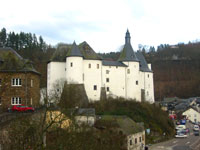
A 12th-century castle overlooks the village of Clervaux, located in the heart of the Ardennes Mountain region 30 miles (50km) north of Luxembourg City. A Romanesque church with twin spires and a large Benedictine monastery completes this idyllic setting.The castle houses three small museums, including one that features a collection of World War II memorabilia from the Battle of the Bulge. Another room is dedicated to the Luxembourg Holocaust victims, its walls lined with mementoes of Luxembourgers who died in concentration camps. The castle often closes without notice so it is best to confirm before making the trip.Behind the castle a road leads uphill to the St Maurice Abbey, built in 1910, where the Benedictine monks sometimes hold Gregorian chant concerts. There is a church service every morning at 10.30am at the abbey.The town is picturesque and has numerous appealing restaurants and cafes, as well as good hotels. It also has a charming little shopping district. Clervaux is easily accessible by train and is a popular excursion from the capital. Two days will be more than enough to explore the little town and its attractions.
Website : www.tourisme-clervaux.lu
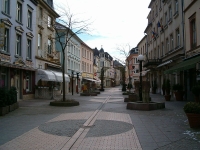
The beautiful town of Echternach lies on the border between Germany and Luxembourg on the banks of the Sûre River, and is widely acknowledged as the oldest town in the country. It boasts a famed abbey, founded in the 7th-century by St Willibrord, whose remains are contained in a magnificent white marble sarcophagus in the crypt of the Basilica.There are also three museums in the town, one dedicated to the history of the abbey, another showcasing ancient artefacts, and a third detailing rural architecture. Echternach also boasts the remains of an ancient Roman villa, thought to have been the largest of its kind north of the Alps.Apart from these attractions, Echternach is perhaps best known for its unique annual event: a centuries' old traditional dancing procession takes place each Whit Tuesday, attracting thousands of pilgrims and spectators.Although the charms of the town itself are undeniable, Echternach also attracts visitors because of its stunning natural surroundings. The town is a base for hikers and nature lovers wishing to explore the area known as the Mullerthal.The Mullerthal is a fascinating landscape of curious sandstone rock formations, waterfalls, creeks, springs and forests. Also known as 'Little Switzerland', this region is criss-crossed with hiking trails and dotted with picturesque villages.
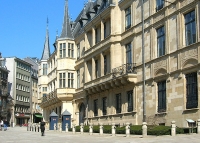
The city residence of the Grand Ducal family is right in the heart of the old town, and is surprisingly unpretentious, recognisable more by the fact that there are sentry boxes and determined looking guards outside, than for any other feature.The building is, however, quite aesthetically pleasing with its Italian Renaissance facade. Built of ochre yellow stones, it overlooks a paved pedestrian square and features spires and railings. It was originally the site of a medieval town hall that was destroyed by a gunpowder explosion in 1554, and rebuilt 20 years later.Those with an eye for architecture will be able to tell that the palace was built over various periods. Much of the structure dates back to the 16th century, although an annex to the building, constructed in 1859, is now the seat of the Chamber of Deputies.Guided tours are usually available in the peak summer months, by arrangement with the Luxembourg City Tourist Office. But for the majority of the year, visitors can't explore the castle and it's simply an interesting landmark to pass by and photograph.
Address : 17, rue du Marché-aux-Herbes
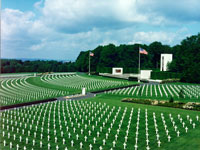
In a silent forest clearing near the village of Hamm, a few miles east of Luxembourg City, lie the graves of more than 5,000 American soldiers killed during World War II, when the Grand Duchy of Luxembourg became a battleground in the Allies' last bid for victory on the Western Front.One of the graves is that of the legendary commander, General George Patton, who died in a traffic accident just after the war. There is a striking central monument to the dead, and some maps detailing the Allied progress through Europe. There are also lists of those who went missing during the war and never found.The cemetery has become a place of pilgrimage and homage, maintained immaculately by members of the American Battle Monuments' Commission. The lines of white crosses are a sobering and moving sight and the cemetery will be of interest to patriotic Americans and anybody with an appreciation for military history.Unlike many cemeteries the world over, the Luxembourg American Cemetery closes each day at 5pm. Not far away, at the village of Sandwieler, is a German war cemetery with some 10,000 graves. While the American Cemetery glorifies the sacrifice of its soldiers, the German equivalent gives more of a sense of the horror and futility of war.
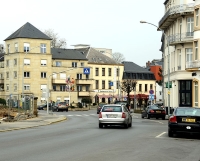
In the Moselle region in the southeast of Luxembourg, nestling in the hills, lies the spa town of Mondorf-les-Bains. Thousands come on holiday every year to enjoy the verdant surroundings and thermal springs of one of the most modern balneotherapy centres in Europe.The town is actually very old, established by the Celts and conquered by the Romans in about 65 BC. The settlement has frequently been attacked and destroyed in its long history, but has nonetheless endured.The Mondorf-les-Bains holiday resort consists of a thermal park set in 50 hectares of parkland, offering a variety of sports facilities and a balneotherapy pavilion with saunas, swimming pools, waterfalls, whirlpools and geysers. The hot springs are said to be particularly good for the treatment of liver, gastric and respiratory ailments, with visitors also pampered by massages and mud baths.There is a casino in the town and historical and architectural attractions include some interesting frescoed churches, a Roman fortress and some Art Nouveau-style houses to visit while on holiday. The spa town has plenty of luxury accommodation, great shopping opportunities and some excellent restaurants.
Website : www.mondorf-les-bains.lu
The Moselle Valley is a region in eastern Luxembourg, promoted as a wine-growing region since the 19th century. It has developed into an important tourist industry thanks to its rural idyllic atmosphere and environment.The Grand Duchy of Luxembourg shares with Germany the wide, navigable Moselle River, tributary of the Rhine. Along the riverbanks are vineyards that produce a wine which connoisseurs rate as among the best in Europe.A wine tour through the quiet villages and wine cellars of the region proves a scenic and relaxing experience. The principal town of Luxembourg's Moselle wine growing region, Grevenmacher, has links to the German bank of the river by a bridge.Grevenmacher is an old town with narrow streets, the remains of medieval fortifications, and a 13th-century belfry. The town's claim to fame is the wine cellars of Caves Bernard-Massard, housing internationally-acclaimed sparkling wines.The cellars are open daily for tastings from April to October. There is a small museum in the town, and an exotic butterfly garden. Grevenmacher is also an embarkation point for regular scenic river cruises on the Moselle, which call at other quaint villages in the region.
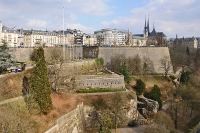
The mighty fortress established by Count Siegfried atop the Rock of Bock in 963 eventually became a citadel with three girdles of battlements, the inner one fortified with bastions, and the other two containing a total of 24 forts along their length.As the centuries passed, the stone cliff foundations underneath the castle were excavated to form a network of 14 miles (23km) of underground tunnels, called casemates, where thousands of soldiers could shelter and workshops for artillery and arms, kitchens, bakeries and slaughter-houses could be housed.In 1867, the Treaty of London declared that it be demolished after centuries of sieges and battles. Despite this, several sections of the fortress still remain, and the subterranean casements are open for viewing. Visitors can also enjoy a sound and light tour on the history of the castle.The best way to view the remaining parts of the fortifications is on foot, strolling through the cobbled streets of the old town. Visitors can get a map from the tourist office (on the Place d'Armes). Although the casements officially open in March, they sometimes open later in the year without any warning. Visitors should check whether they are open before visiting.
The National Museum for History and Art was recently substantially refurbished and contains some major archaeological finds from Luxembourg which include artefacts from the Gallo-Roman period and the Middle Ages, displayed in underground galleries.The collection covers the history of Luxembourg since the first evidence of human habitation, and it is vast, covering a wide array of topics. Exhibitions of fine arts, modern art, medieval artefacts, coins, medals and arms are all on display.The collection also includes exhibits on local culture and folklore, and interesting photographs demonstrating how the city has changed through the decades. The museum regularly hosts workshops and temporary exhibitions covering a wide range of topics.There is a cafe at the museum for refreshments and during summer it has a sunny terrace for guests to enjoy. There is also a small gift shop for mementoes and souvenirs.
Website : www.mnha.lu/en/MNHA
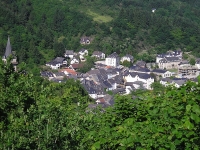
The picturesque village of Vianden, situated on the banks of the Our River and guarded by a magnificent restored medieval castle, makes a pleasant day trip as it is conveniently only 25 miles (40km) north of the city of Luxembourg.The castle dates back to the 9th century and was originally the home of the counts of Vianden, powerful nobles until the 13th century. The ruined castle was restored in the 1980s and now houses a museum that recaptures life in the Middle Ages and recounts the area's troubled history.In the small town below, visitors can sip tangy Moselle wines beside the stream while enjoying the views of the green hills. The village has been delighting tourists for more than a century, and strolling around the narrow cobbled streets beneath towers and medieval ramparts feels like stepping back through time.The surroundings of the town are magnificent and there are many pretty walking trails to be explored using Vianden as a base. Indian Forest also offers fun and thrilling high rope and zip-line courses for the whole family, which allow visitors to traverse the forest canopies. There is plenty of quality accommodation and some lovely restaurants to enjoy in town.
Website : www.tourist-info-vianden.lu

Travel Guide powered by Word Travels, copyright © 2023 Globe Media Ltd. By its very nature information in this travel guide is subject to change at short notice and travellers are urged to verify information on which they're relying with the relevant authorities. Neither Globe Media Ltd nor Travel Vogue can accept any responsibility for any loss or inconvenience to any person as a result of information contained above.